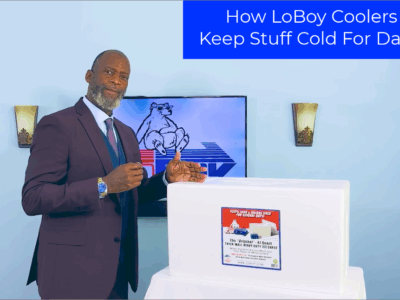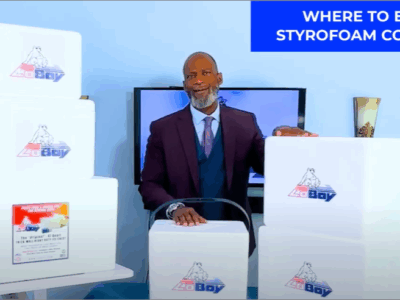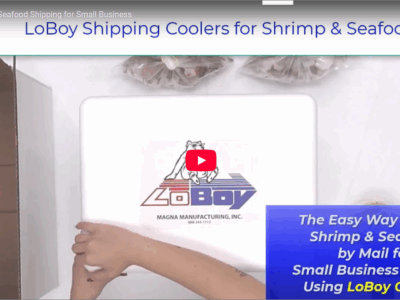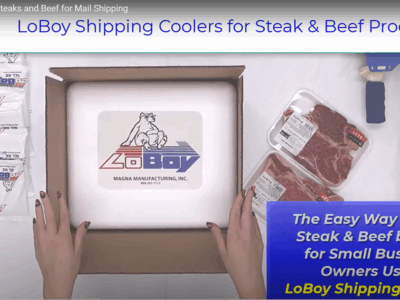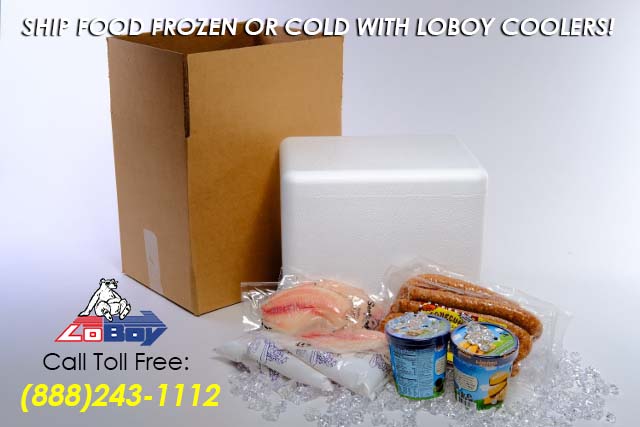
Safely Shipping Frozen or Cold Crab, Shrimp, Fish, Lobster Across the United States!
If you're in the seafood business whether as a distributor, retailer, or company that sends fish, shrimp, crab and more by mail, you know the process to pack and ship seafood products is no easy task, especially in this modern age of fast or overnight delivery. Sure, it's not rocket science, but with customer satisfaction and bad online reviews a constant concern, you cannot take for granted that you can just throw seafood in a box and put it on a Fed-Ex truck.
Seafood (especially shellfish) is a very delicate cargo that can easily spoil if not treated properly. When you're dealing with hundreds or thousands of shipments traveling across the city, the state, country (or the world) every day, there are a lot of things that could go wrong.
Plus, time is always a factor. Making sure your product arrives as quickly as possible is important to ensure it arrives fresh. If your seafood isn't packed properly, there could be unnecessary spoiling from temperature loss or a weak, broken container or cheap corrugated box. To make sure you can save some time (and some headaches), here are a few tips for making sure your seafood is packed and shipped well every time. You'll learn about shipping both fresh seafood and frozen and how to pack your shipments. Plus, you'll learn what the best containers to use are to ensure your products arrive safely.
How to Ship Fresh Seafood in a Seafood Shipping Box
Shipping fresh fish is much different than shipping frozen. You may be inclined to use the same processes that you use with frozen fish, but it's a whole different ball game.
Temperature control is a major factor. If your shipments get too cold, your fresh seafood could freeze, leading to quality issues. If your shipment isn't packed in the right styrofoam cooler, or if the cooler is not properly secured with the right tape and high-quality corrugated box, it could lead to rising temperatures and nasty spoiling.
Consider the Seafood Shipping Box Container
When you're shipping fresh seafood and shellfish, your interior packaging matters just as much as your exterior packaging. You want to make sure you place your fish inside a thick plastic bag. You may want to double bag your seafood for extra protection.
Most types of shellfish like lobsters, crabs, and prawns have sharp enough claws and tails to pierce through the plastic. Even fish scales are surprisingly sharp and could break through the thin plastic.
You can use zip-ties to tie the plastic bags as well to make sure there isn't unnecessary oxygenation or heat entering. You may also want to put in some absorbent pads or mats outside of the plastic bags as a way to absorb any accidental moisture or leaking.
Use Gel Ice Packs in Your Seafood Shipping Cooler
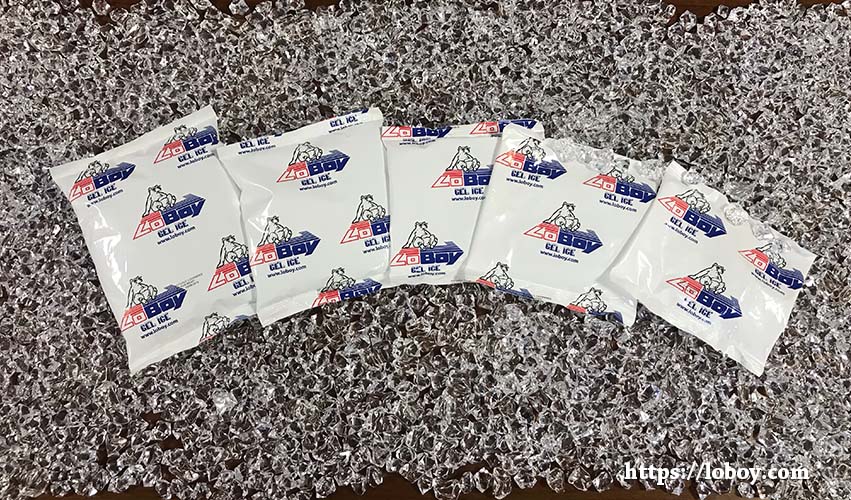
In order to keep your seafood fresh the entire delivery, you'll need to make sure you use gel ice packs. Don't use regular ice packs or blocks of ice as they are much more likely to create a mess (which can spoil your shipment). Regular ice packs are also heavier which adds unnecessary weight to the shipment (and costs more).
Gel ice packs are the best bet for keeping your meals and meal kits cool during delivery.
Because they're much lighter than ice, they create a more cost-effective shipment. Plus, they're versatile. Depending on your specific style of meal delivery service, you may need to keep your shipments cold or frozen. Gel ice packs are able to keep your meals cool or frozen, depending on what you're needing. Plus, once your shipment is delivered, you can reuse the gel ice packs over and over again.
If you want the best gel ice packs for shipping prepared meals, make sure to check out the LoBoy Gel-Ice Reusable Gel Ice Packs. They're a leak-resistant 4-millimeter refrigerant sleeve containing space-age, long-lasting refrigerant gel that stays frozen longer than ice.
How to Ship Frozen Seafood in a Seafood Shipping Cooler
Shipping frozen seafood demands a whole new set of requirements compared to shipping fresh seafood. Whether you ship salmon, crab, lobster, oysters, crawfish, or shrimp, you'll need to make sure you follow proper shipping procedures so it arrives safely.
Any slight rise in temperature could potentially ruin your delivery, or lead to contamination that could impact your customer negatively, which could cost you and your company a lot of money (and frustration).
The Challenges of Shipping Frozen Seafood & Shellfish
Most frozen food distributors can agree that shipping anything frozen is always a challenge. There are a number of challenges to consider when shipping frozen products:
- Extreme Temperature Fluctuations: Any major rise or drop in temperature greatly affects how frozen foods must be packed and shipped. It's crucial to make sure the seafood shipping box they're shipped in is properly insulated to withstand these extremes.
- Varying Humidity: If you transport your seafood in humid regions, you know how challenging it can be to make sure your shipment stays cool.
- Spoilage: This is a major challenge frozen food vendors face during the shipping process. If your seafood isn't packed with properly insulated styrofoam ice chests, it drastically increases the chance it will arrive spoiled before it even arrives.
Being aware of the challenges you face as a frozen seafood distributor is important to make sure you're always taking the necessary steps to reduces your chances of a faulty shipment and make sure your seafood arrives fresh every time.
When Packing Your Frozen Seafood in a Seafood Shipping Box
Before you send your frozen seafood off on its next delivery, it's important to understand how to properly pack and refrigerate it to ensure it arrives safely. Here are a few tips on how to efficiently pack your frozen seafood in a seafood shipping box:
- Use appropriate insulation for seafood and shellfish that must remain completely frozen all the way through the delivery
- If your seafood may be prone to leaking, you need to use watertight plastic. Using double thick plastic bags with zip ties is important so there isn't any nasty mess on the way. It also ensures extra protection from extreme weather conditions
- Make sure you pack your frozen seafood in styrofoam ice chests and styrofoam shipping coolers to keep your product frozen for hours or days.
- Use a generous amount of gel ice packs to make sure your shipment remains frozen throughout delivery.
- Be cautious if you use dry ice as well, as some couriers won't accept a shipment with dry ice in airtight packaging. The USPS (and other couriers) won't allow dry ice for international shipments.
- You should use approximately 1 pound of gel ice packs for every 3 pounds of seafood or shellfish
- Optional: some absorbent pads (or mats) is a useful way to take extra precaution in case there is a leak (and also adds padding to the seafood to protect it from banging around).
What Kind of Styrofoam Ice Chest You'll Need...
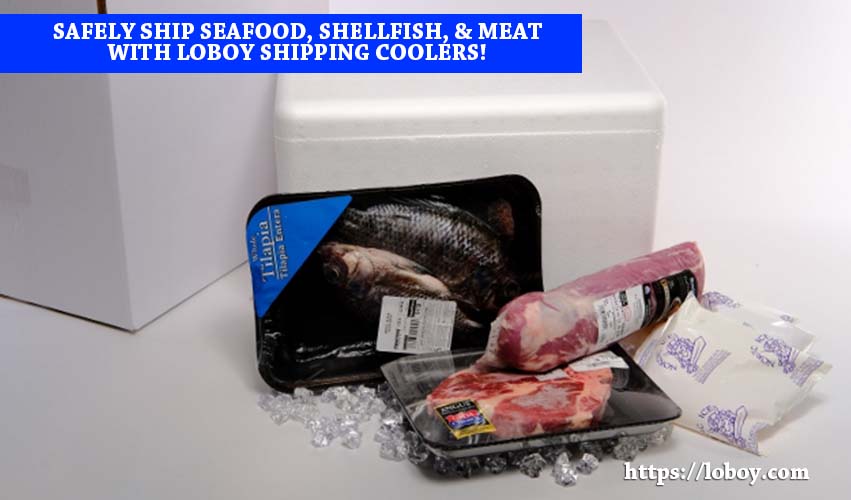
When shipping fresh or frozen seafood, you'll need to make sure you're using a high-quality seafood shipping cooler.
The industry standard for transporting seafood (fresh or frozen) is an insulated Styrofoam container. However, every styrofoam ice chest isn't created equal. If you're transporting fresh or frozen seafood, you'll need to make sure you use a container that keeps the heat out so the seafood can stay as cool as possible.
If you're wanting to make sure your seafood arrives as fresh and as safe as possible, and aren't sure where to look for a high-quality insulated cooler, check out our LoBoy Styrofoam Coolers and LoBoy Styrofoam Shipping Boxes. They come in a wide range of sizes and wall thickness to safely ship any amount of seafood.
The combination of using LoBoy Reusable Gel Ice Packs with the and LoBoy Styrofoam Coolers is sure to make sure your seafood arrives fresh, even if you have to ship it across the country.
 LoBoy Styrofoam Cooler Survives 30-Ft Throw From Roof!
LoBoy Styrofoam Cooler Survives 30-Ft Throw From Roof!
